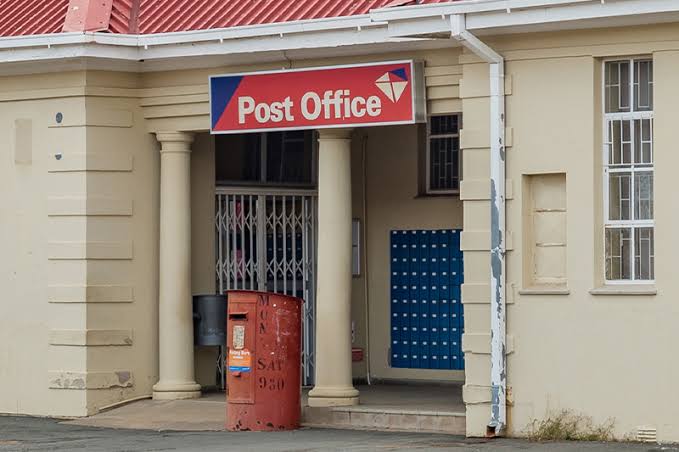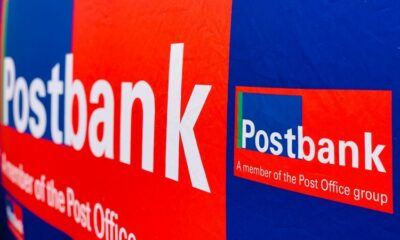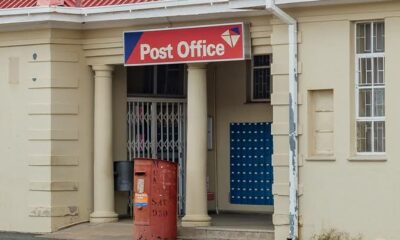News
On the Brink: South African Post Office’s Fight for Survival

Debt write-offs saved SAPO from collapse, but now the hard part begins
The South African Post Office (SAPO) is holding on by a thread. After years of deep losses, shrinking revenue, and mounting debt, it’s taken a miracle mix of bailouts and business rescue to stop the bleeding. But as bold turnaround plans are put on paper, many are asking: Can SAPO really be saved—or is this just another state-owned money pit?
Freefall and Financial Ruin
SAPO’s downward spiral began years ago. Back in 2019, its revenue stood at R5.44 billion. Fast forward to 2024, and that figure has dropped by nearly 70% to R1.65 billion. Its net asset value? A staggering negative R7.9 billion in 2023, meaning if SAPO sold everything, it still couldn’t pay off its debts.
The situation became so dire that in July 2023, SAPO was placed under business rescue, a last-resort mechanism for companies on the brink of collapse. Creditors accepted a radical deal: 12 cents for every rand owed, giving SAPO a R7.4 billion debt write-off. Government then stepped in with another R3.8 billion taxpayer-funded bailout, bringing temporary relief.
Smoke and Mirrors?
On paper, things look rosier. The Post Office posted a R5.2 billion profit and positive equity in 2024. But don’t let the numbers fool you.
That “profit” comes from accounting, not operations. The R5.2 billion is simply the value of the debt that was written off, booked as income. Without that, SAPO is still operating at a net loss of over R2.2 billion.
The Bold Turnaround Plan
SAPO’s new five-year strategy is daring. It aims to grow revenue by R1 billion quickly and hit R1.5 billion in profit by 2029. It’s counting on digitisation, eCommerce, and a leaner cost structure. But the numbers are ambitious—some say unrealistic.
Former CEO Mark Barnes, who left in 2019, is highly skeptical. Speaking to eNCA, he dismissed the recovery plan as vague and overly optimistic.
“There are no numbers in the first nine pages. It’s all buzzwords,” Barnes said. “We already have global giants dominating eCommerce. SAPO isn’t going to leapfrog them.”
He questioned the feasibility of growing revenue by 25% annually while costs grow at only 5%, adding:
“I’ve never seen a business plan this confident, it should concern all stakeholders.”
Public Confidence Is Fading
While many South Africans still see SAPO as essential, especially for rural delivery and SASSA payments—patience is wearing thin. Social media has lit up with frustration over late pensions, lost mail, and ghost-town branches.
“People can’t even collect a parcel, but we’re bailing them out again?” one X user asked.
“My grandma’s pension still doesn’t arrive on time. What exactly are we saving?” wrote another.
Can It Deliver?
Despite the write-offs and bailouts, the real test starts now. SAPO must modernise, compete with private couriers, and win back public trust without burning more taxpayer rands.
As the government faces growing pressure over failing SOEs, from Eskom to Transnet, SAPO’s performance will be a litmus test for whether it’s worth saving struggling state enterprises, or letting them go.
Quick Recap
-
Revenue dropped from R5.4B (2019) to R1.65B (2024)
-
Negative equity of R7.9B by 2023
-
Business rescue and R7.4B debt write-off in 2023
-
R3.8B bailout from government to pay statutory creditors
-
Turnaround plan targets R1.5B profit by 2029, but experts are doubtful
-
Former CEO Mark Barnes slams the plan as unrealistic
-
Public patience with SAPO’s services and bailouts is fading fast
{Source: Daily Investor}
Follow Joburg ETC on Facebook, Twitter , TikTok and Instagram
For more News in Johannesburg, visit joburgetc.com



























